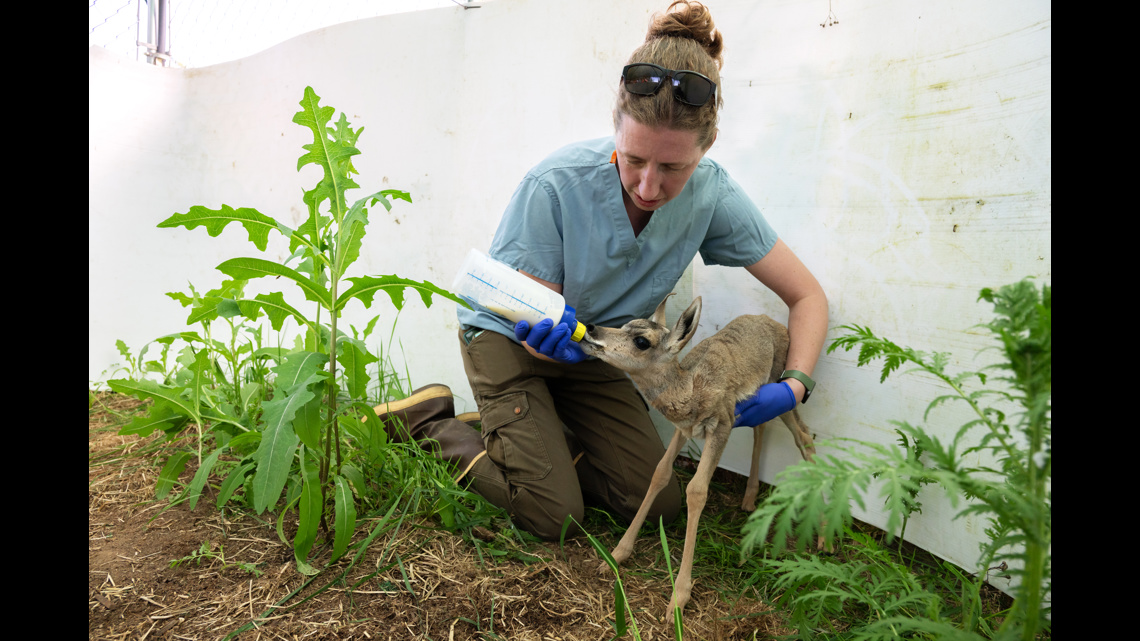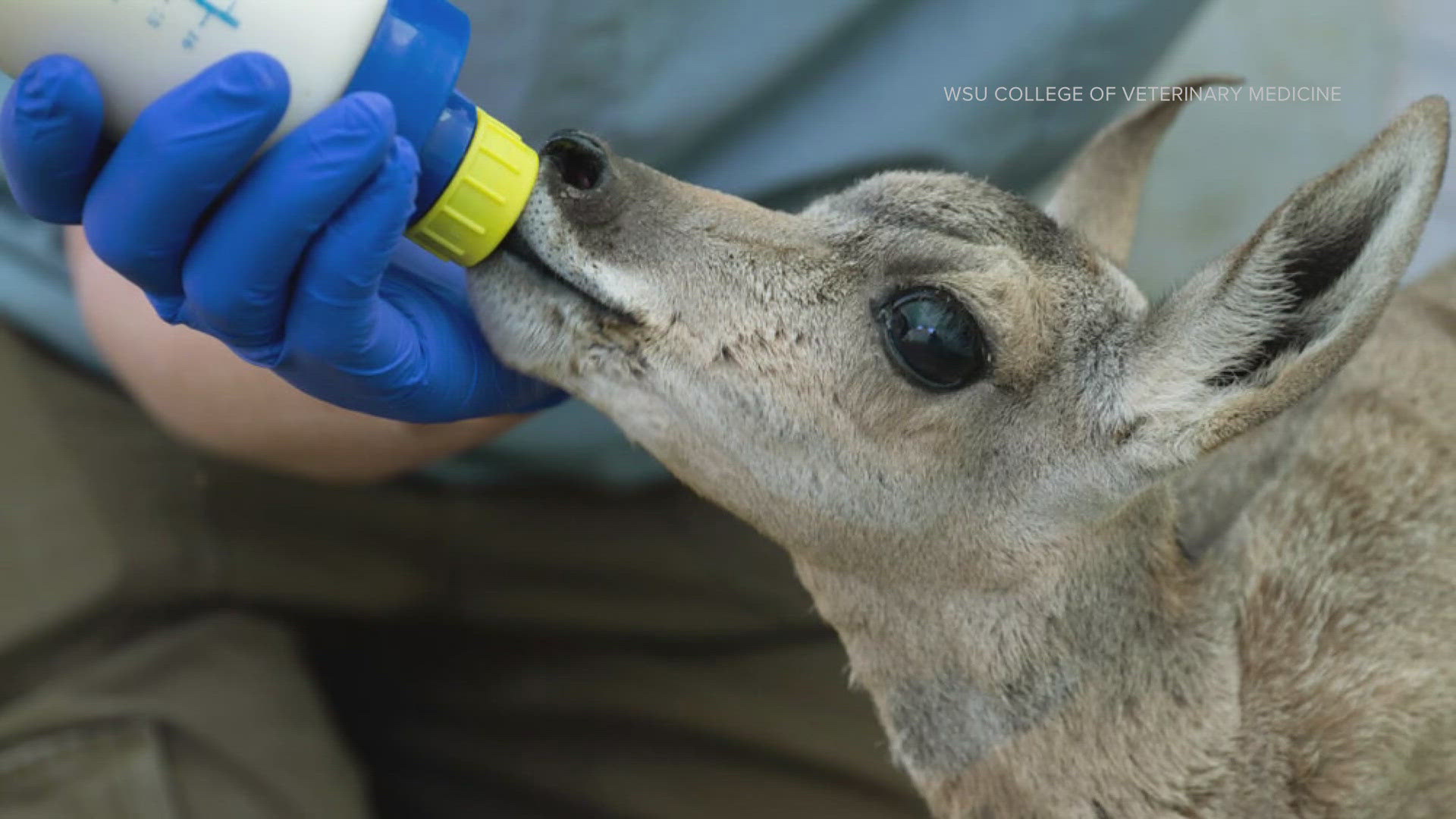PULLMAN, Wash. — A baby pronghorn antelope was named 'Marcie' after the Washington State University (WSU) wildlife veterinarian who rehabilitated the animal over the summer.
Dr. Marcie Logsdon said the animal was taken from its herd after a pet owner found their dog carrying the seven-pound newborn antelope in its mouth earlier this summer. It was then brought to WSU, where Dr. Logsdon helped rehabilitate it.


“This happens from time to time. We’ve seen it happen with deer fawns. The dogs don’t think it is their baby or anything but they’re intrigued — they found a fun thing and they want to pick it up and bring it back," Logsdon said.
While the baby pronghorn was not very injured, it needed antibiotics, fluids and bottle feeding to bring it back to good health.
Reuniting a pronghorn with its herd can present challenges because the herd moves around, the baby may not be accepted by the herd. The rehabilitated animal could also imprint on humans, making them less afraid when back in the wild. Dr. Logsdon said captive placement at a facility where the pronghorn could help conservation and education efforts made the most sense.
The baby pronghorn is the first rehabilitated pronghorn documented in Washington state.
To her knowledge, this is the first time Longsdon has had an animal named after her. “There were a lot of people involved in this case, but I am honored that the zoo chose to her name after me,” Logsdon said.
'Marcie' is now a resident at the Minnesota Zoo. The animal is one of eight different species in a habitat that includes the same prairie terrain that pronghorns are used to in the wild.
The pronghorn antelope is the fastest land animal in North and South America. They were a threatened species in North America in the 1920s due to overhunting and habitat destruction. Now the animal population has bounced back and pronghorn are found throughout the west.

